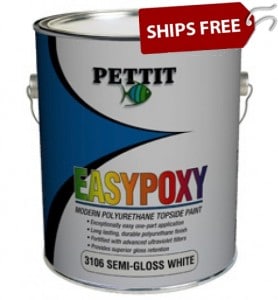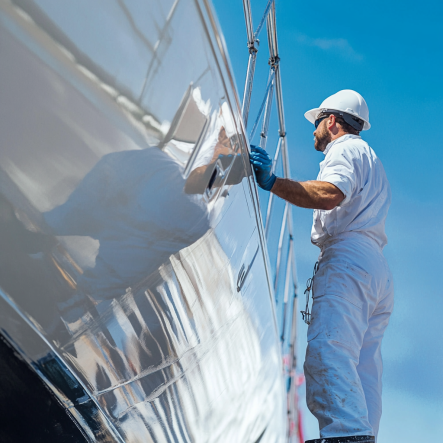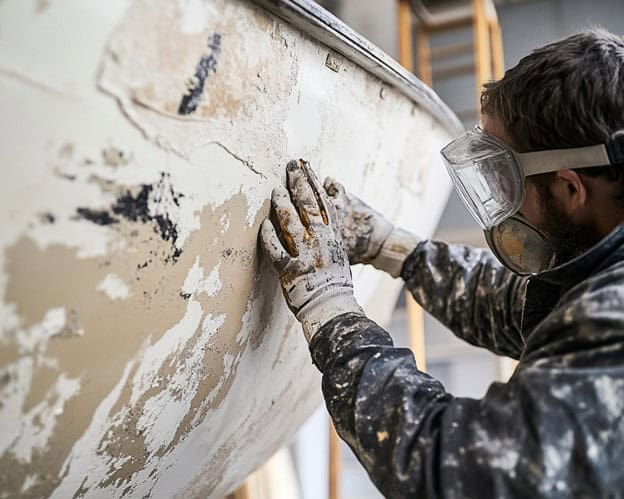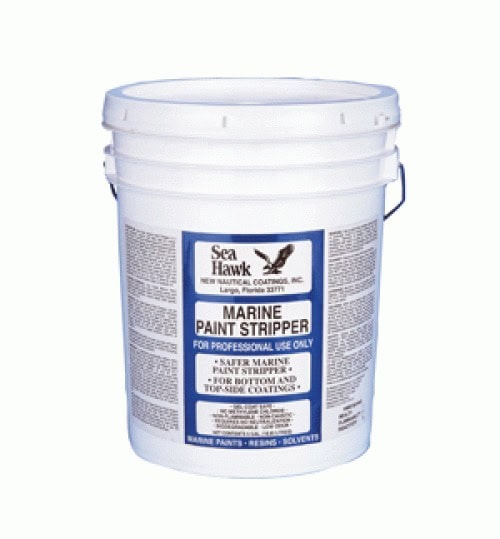If you live in one of the northern states of the U.S. your boating season will come to a close eventually, and that means getting your boat ready for winter. If you want your boat to stay in good shape, you’ve got some work ahead. Don’t worry, we’ve compiled a solid checklist to keep your boat’s paint intact through the cold months, so when you’re ready to hit the water next season, so is your boat. Let’s get to it and make sure your paint job survives the winter chill!
Clean the Hull Thoroughly
Before storing your boat, remove any dirt, algae, or barnacles from the hull. A clean surface ensures that any existing antifouling paint remains effective and that you can inspect for damage more easily. Use a pressure washer or soft brush with mild cleaners suitable for your paint type.
Inspect for Paint Damage
Once clean, inspect the hull for any signs of paint wear or damage. Look for cracks, chips, or peeling areas, especially along the waterline. If you notice severe wear, mark these areas for touch-up or repainting when temperatures are suitable.

Repair Minor Paint Damage
If you spot minor chips or scratches, use touch-up paint to fix them. Pettit Paint offers small-scale repair solutions, such as their topcoat and primer products, which are ideal for such jobs. Ensure you follow manufacturer instructions for temperature and humidity during application.
Apply a New Coat if Necessary
If your boat’s antifouling paint has seen better days, consider applying a fresh coat before winter. Pettit’s water-based antifouling paints offer excellent protection and can be applied in cooler temperatures. Make sure to check the weather conditions and follow the specific drying times.
Use a Primer for Extra Protection
For boats that will be stored on trailers or cradles, applying a protective primer like Pettit’s Protect High Build Epoxy Primer can prevent moisture from penetrating the hull and causing blisters. This layer adds an extra barrier against winter’s harsh conditions.
Winterize the Hull
For boats stored in water, consider applying a protective wax or non-stick coating to prevent marine growth from attaching during the offseason. Pettit’s specialty products, like Prop Coat Barnacle Barrier, are perfect for safeguarding your boat’s underside.
Check Weather Exposure
If your boat is stored outside, ensure it is properly covered and sheltered from the elements. Direct exposure to snow, ice, and freezing rain can damage the paint. A good-quality cover, combined with proper ventilation, will help maintain your boat’s finish during winter.
Spring Inspection
Before launching your boat in the spring, inspect the hull again to ensure the paint held up over the winter. Touch up any areas that may have been compromised and perform a light cleaning to remove dust or debris.
Your boat is a prized asset, so you need to protect your boat’s paint from winter damage and ensure it’s ready for the next boating season. Regular maintenance is key to extending the life of both your boat and its paint. Regular maintenance isn’t just smart—it’s essential if you want your boat looking good and running smooth year after year. Need more tips or the best marine paints to get the job done? You can count on our expert advice and high-quality marine paints, just contact the customer support team at Bottom Paint Store.



